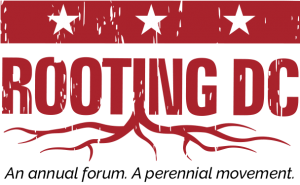By Garret White
“I strike today,” said Jansikwe Medina-Tayak, “because [of] the fact that frontline communities, indigenous communities and low-income communities face the worst of climate change, despite the fact that they contribute the least to it.”
For climate activists and their allies, protesting throughout Washington D.C. on September 23, the urgency of addressing systemic ecological devastation became an issue with enormous intersectionality (not to mention intersections).
As a rule – for ecologically-conscious people, the end goal is to decry “business as usual,” in all the ways its cages – routine-prisons – manifest. It was never just an insatiable urge to interfere. We’re after a change of heart.
For a majority of us, an “existential threat to our civilization” may not be a crisis within earshot. Nevertheless, chants of “We’re here for you. It’s your children’s planet too!” resonated and – expressed intent of inviting passersby and police to direct their attention towards our ongoing ecological and climate crisis.
“People are polluting the earth.” said student, Neal Peter, reported the Washington Post, “I’m not in school today because I think this protest is really important, because the earth is very important.”
“Nothing else matters,” added Gabrielle Gilliam, “if we have no earth to live on. And it’s already affecting the lives of especially black and brown people in our community.”
Prior to this, a more orderly (and Press-heavy) Youth Climate Strike on September 20, ended on the Capital lawn. There were marshals and street medics with backpacks of water and throat lozenges. Younger advocates, perhaps, not yet as impressively articulate, were herculean nonetheless.
As the crowd-waters rose, the rally began. Jansikwe Medina-Tayak representing the Piscataway nation, offered a land recognition by thanking her ancestors, the original peoples of the land – where remains the US capital lawn, white-marble monuments and other mythologies.
However, as is so often the case, all-too-soon after the rally concluded, the people dispersed. Chaperones surveilling buses, re-loaded. And the quiet, regained.
I spied painted signs tilted beside trash bins, near-bursting with wrappers and bottles.
It was then, under the shade of an enormous tree, Teo Filo, of the yellow nation, held an impromptu prayer circle. With his hide-drum, he sang, and welcomed wanders-in to clockwise-dance to their liking.
As Teo explained, what is needed was “reconnection” to grandmother earth to “our families, our relatives, our relations, our connections all around us,” to a vastly more respectful and mindful way of living. As we were “once careful stewards of waters,” he prayed for our continued “acknowledgment of the gifts that our surrounding relatives provide,” and justly, also that those listening: “respect and protect the relatives that sustain and love you.” [Teo added the note that these words are not “his,” but as ancient as they are sacred.]
To be sure, holding such a sincere space, as witness to strangers’ stories, changes a person, and recenters a renewed commitment to the work of repair. But that notwithstanding, this type of inward outlook, becomes increasingly more urgent the more it is overlooked.
The Wednesday before the Friday Strike, Rev. Lennox Yearwood, President and CEO of the HipHopCaucus, had spoken to gathered activists, all having signed a pledge of resistance. Throughout his speech, he called for an expansion of how environmental advocacy can be embodied and offered this wisdom through a historical perspective. “[The modern exclusively-environmental movement] is one of the most well-financed movements,” Rev. Yearwood explained, continuing, to remind environmental advocates that they must follow through with every opportunity to “Break down the silos!” “Be unified, like no other!”
Now the question arises: How can climate action, at its root, be our unequivocal call for healing ourselves of the inherited toxicity of systemic disempowerment, prejudice, and self-hatred?
Environmental advocates can all too easily lose sight of centering first nation peoples and black and brown people, who continue to guard this wisdom throughout the pandemic of their enduring persecution.
Ignored by many white environmental advocates is how people of color (POC) are pushed to the margins in organizing spaces, if only as overtly as having no POC priorities centered through the planning process. While having little chance to speak at many environment-centered actions, there are consistently POC people being not-so-subtly expected [perhaps unconsciously by some well-meaning white people], to 1) show up, first of all, but most tragically, 2) to present within a spectrum expressly limiting their self-expression.
We, earth-conscious people, must acknowledge the intersectionality of state-sanctioned violence, pollution, and poverty, because there are systems to this day redirecting toxins onto our neighbors deemed “less than.” White supremacy is a poison as potent as any pesticide.
Our love, as environmentalists, must expand further than the grocery store. We must be willing to work on ourselves and do our own heavy lifting. There exists enormous potential for environmentalism, in Rev. Yearwood’s words, to become “not an issue just of the planet, but of the people.”
Having an affinity for such distant relatives as “blue whales” or “polar bears” is too abstract. On the contrary, visibly validating the legitimacy of your neighbor’s humanity, is, today, a necessity as essential as shelter. It is, therefore, an entirely more urgent and strident prerequisite of my fellow, oftentimes insulated, environmental advocates.
Our siloed advocacy is a blind eye to suffering; the gagging what must be said.
Green advocates are those most at risk of rationalizing the trade of human suffering for environmental gains. For this very reason, to not address the harms of hatred, nor the combustibility of divisiveness, is to leave no room to breathe, and no future altogether.
In the end, if our love of “Nature” remains rooted to the rotten core of distrust and class segregation, then we are walled from the truth of our interdependence.
Even our best intentions can become exclusionary and corruptible, sickening everything we touch.
Blindly adhering to business as usual would be catastrophic to grandmother earth, but if not more immediately, to our own mental health. Our detachment could drive us insane. What remains most urgent is repairing our ability to work alongside and listen to each other, and to cultivate sturdy relationships no amount of pain can weaken.
It’s life or death. Ours can be lives of desperation or of cooperation – because the closer we bind together, the longer we stand. Our greatest potential lies in solidarity among causes, walking, embracing each other’s songs.


